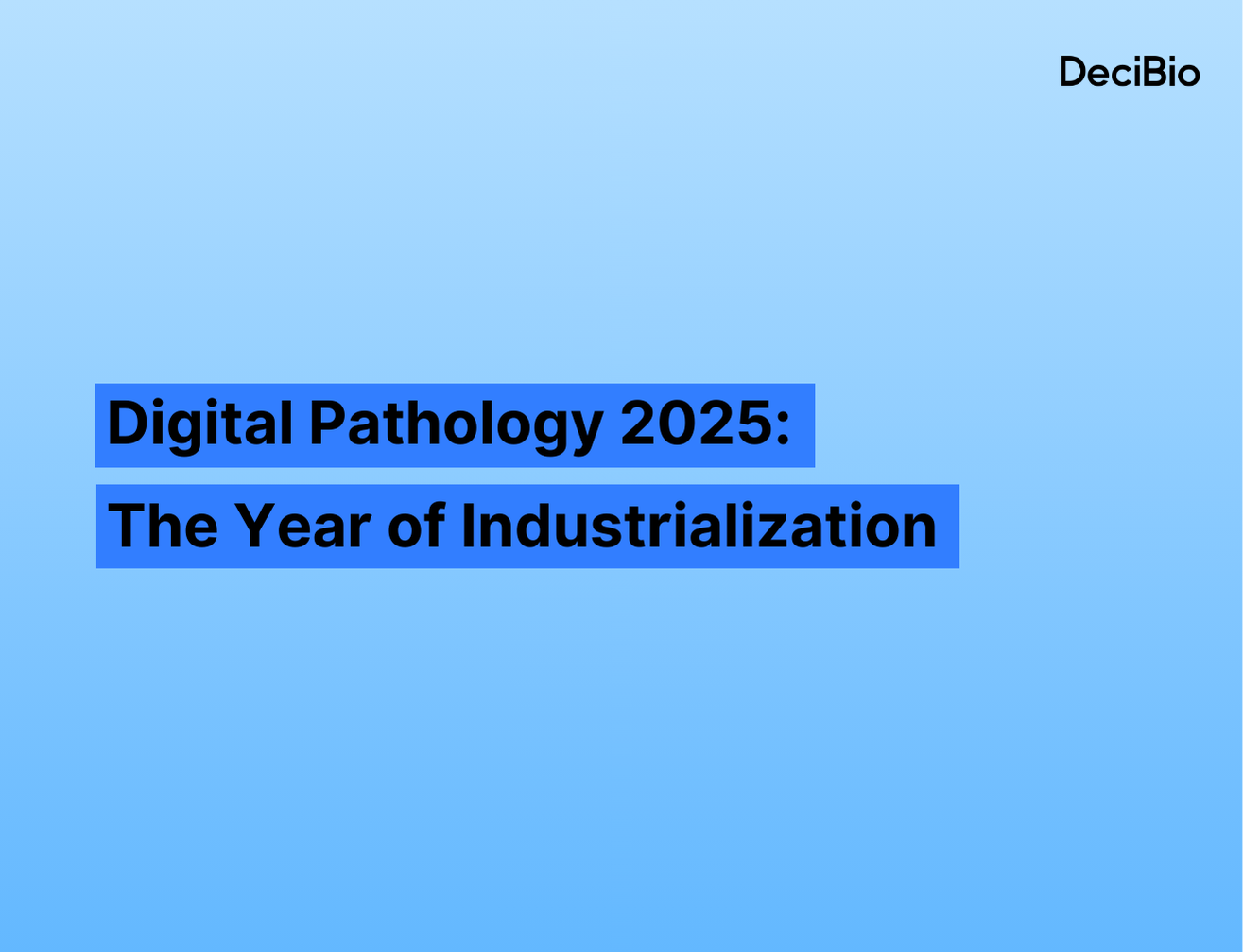We were excited to attend the Pathology Visions conference put on by the Digital Pathology Association this year in Las Vegas. The conference brought together the “who’s who” of digital pathology, with nearly 900 attendees across DP companies, researchers, clinicians, and pharma. Throughout the 3-day event, attendees remarked that the size of the conference was noticeably larger compared to previous years, illustrating the increasing excitement around digital pathology.
While at the conference, we spoke with ~25 attendees to identify the top DP trends that they expect to be most impactful in the next 1-2 years and the companies they are most excited about. We consolidated feedback, assigning rank based on number of mentions.

Top 6 Near-term Digital Pathology Trends
#1 AI enthusiasm is growing
While historical attention has been more focused on the hardware that makes digital pathology possible, there is increasing interest in the algorithms that are unlocking new clinical opportunities. Paige, Imagene, Visiopharm, and others shared data on the ability of DP to improve on manual IHC scoring, particularly in HER2 low populations. Deep H&E is also of interest; the ability to detect predictive signatures that are not discernible by the human eye would be a game changer for DP adoption. “Digital pathology is the racetrack and algorithms are the race cars … It is the cars that make it exciting”
#2 Clinical uptake and reimbursement will expand
Many of the exciting advancements that have come out of pharma and AMCs in the past few years are expected to make their way into the clinic in the near future. Moving beyond just scanner adoption, digital and computational pathology are expected to be increasingly used to inform primary diagnosis (although a true “killer app” has not yet gained traction). Attendees expect reimbursement to become established in the next few years. This, paired with growing awareness, and emerging clinical datasets, will facilitate inroads into a wider group of academic and community adopters than has typically utilized DP. “Everything will be incorporated into the clinical lab … reimbursement is going to begin to make that more feasible”
#3 Consolidation is expected over the long term
Over the past 5 years, an increasing number of scanner, algorithm, and image management solution (IMS) companies have been entering the DP market. While there is space for multiple companies to gain traction, many attendees expect consolidation over the long-term, particularly across product types. Traditional pathology companies that have been making inroads in digital pathology, such as Roche, Agilent, and Leica, came up as top contenders who are positioned well to create enterprise-wide ecosystems. We see some “AI / algorithm-first” companies like PathAI, PaigeAI, and Visiopharm investing in slide viewers as well. As algorithms are developed for an increasing number of indications and applications, consolidation will streamline clinical access. The IMS landscape also remains fragmented today, and attendees expect to start seeing consolidation in this space over the next 3-5 years. “Consolidation is coming - there is no way around it … will scanners invest in AI or vice versa? We will see in the next 2-3 years”
#4 Interoperability and open platforms will be key
As seen in our recent blog post (linked here), partnership activity has been dramatically increasing over the past 2 years. This, along with improving standardization, has resulted in improved interoperability of the many aspects needed to make digital pathology work. Several image management solution attendees (including Proscia, Inspirata, and Roche) touted their open-platform, demonstrating that enablement of third-party applications / algorithms to be run through their systems is critical. Clinicians and vendors alike recognize that interoperability with non-DP systems (e.g., LIS, EMR) will be key to broader uptake of digital pathology. Despite the expected trend towards consolidation, interoperability will continue to be of importance, as KOLs do not expect one company to be able to address all of the market needs. As long as customers continue to use multiple vendors within DP, interoperability will be key. “We have heard talks about openness for years, but it is finally coming to fruition now”
#5 Multiplex and DP will continue to intersect
Research and clinical-facing stakeholders alike are keeping their eye on product developments by multiplex tissue analysis companies such as Akoya and Nanostring. This multiplex analysis is inextricably linked to digital pathology, and could be a driver of adoption, particularly in the research setting. Multiplex vendors expect to push into the clinic in coming years, but it is yet to be determined what the appetite for high-plex (e.g., >5 plex) will be outside of leading academic institutions and reference labs. Immunofluorescence, though an invaluable research tool, has a long path to decentralization given its infrastructure requirements. “We are seeing that more than one marker is often required for a meaningful signature; pharma is using these technologies in trials” - Learn more about our Clinical Spatial Biology and Digital Pathology Competitive Intelligence Report
#6 RWD is a gap and will enable progress
There is a white-space opportunity for aggregating, curating, and leveraging digital pathology RWD in a more widespread way, particularly as digitization of clinical samples increases. There doesn’t seem to be clarity yet on what exactly the path ahead will be for RWD, but it is on people’s minds. Pathology RWD is expected to be most valuable in combination with clinical (and genomic) data, so partnerships may be key to address the market need. “RWD will be a driver of algorithm and partnership growth … it’s all about the data”
Note: Companies mentioned may be clients of DeciBio







.png)

